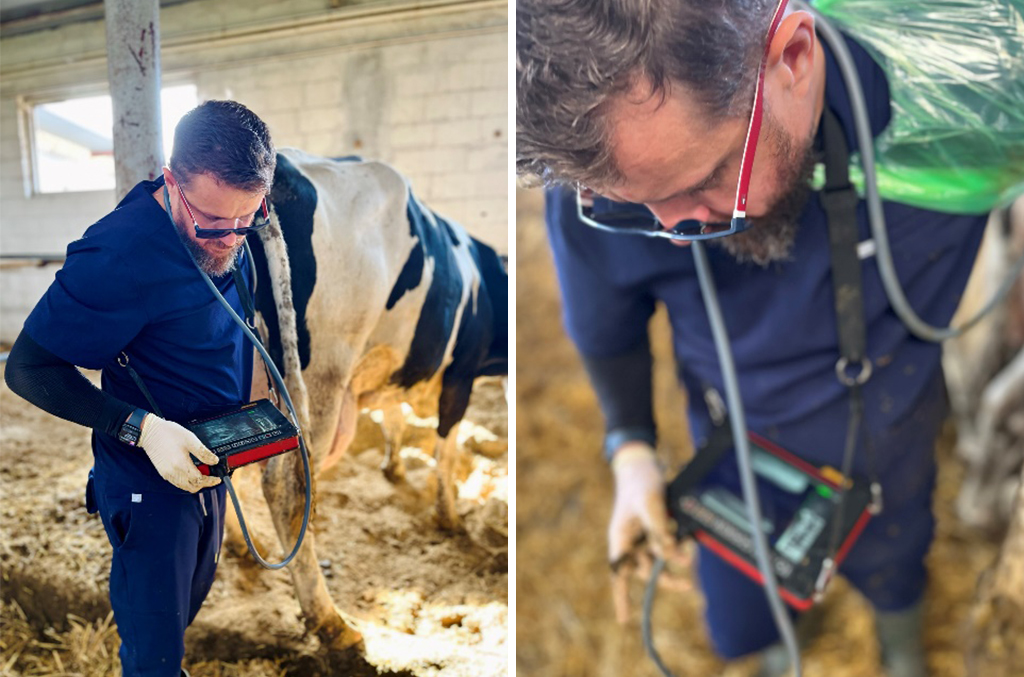HORMONAL CONTROL OF COW REPRODUCTION

Today, it is impossible to imagine managing the reproduction and breeding of dairy cows without the introduction of hormonal programmes. Hormonal control of reproduction offers numerous benefits, the most important of which are:
1) Easier farm management – The farmer knows when breeding will occur or when preventive measures, such as vaccinations, will take place.
2) Significant reduction of human errors – For example, missed oestrus, which may happen at night.
3) Allowing better control over the farm situation – Regular breeding visits, at least every two weeks, make it much easier to monitor, e.g.:
a. Feeding – Nutritional errors quickly affect reproduction.
b. Health – Regular visits help assess the health of calves, heifers, and cows, often catching issues that the staff may not notice.
c. Prevention and hygiene – For example, checking the cleanliness of calf buckets, pens, and disinfectants used.
4) Improvement of fertility of the herd and breeding efficiency – By regularly examining a given herd, we know it and we know when to breed after a given programme, i.e. we determine the optimal time for breeding.

At this point we need to stop and pay attention to the fact that even though a given programme tells us to inseminate at a given time, and we find that most cows in this herd are available for mating at other times –we change them and adjust them to a given herd. Many times, changing the breeding time, for example from morning to evening, has improved the pregnancy rate and PR increase in our herd!
5) Unification of the sexual cycle of cows in the herd, the end result of which is the synchronisation of oestrus.
The hormonal programmes we use, such as:
– Presynch

– Double Ovsynch

– G7G

– G6G

– G5G

One of the challenges for the veterinarian managing reproduction in dairy herds is choosing the right hormonal programme from the many known variants and modifications of the OVSYNCH programme. When starting work with a new farm, we adapt the programme to the herd’s needs. Sometimes, the first applied programme works very well, while other times, we have to experiment and adjust. Animals are living organisms, and no one can tell me that what works for one herd will always work elsewhere.
In my opinion, the key parameter in choosing a programme is the frequency of herd examination. Regularity of testing is a significant element influencing the success of breeding in the herd. I believe that to successfully manage and control the reproduction of dairy cattle, visits should occur weekly or biweekly. This allows full control over the condition of the animals’ reproductive organs, both right after calving and in later stages of lactation. Regular visits enable us to control and modify the treatment of problematic animals, such as those with cysts or anoestrus. With less frequent checks, such cows are often neglected.
Additionally, it is important to have good cooperation between the veterinarian and the breeder or zootechnician, and to ensure the systematic administration of hormonal treatments.
A commonly used practice is also changing the programme after an ineffective insemination. For example, when starting with the Double Ovsynch programme, I do not use the same programme for cows that are not pregnant after the first insemination. Instead, I may use inserts or switch them to the G7G programme. However, we must be careful about the timing to avoid prolonging the lactation period.
It is also crucial to prepare cows before initiating breeding. Before starting any hormonal programme, the animal must be clinically examined. This is where ultrasound plays an invaluable role.
Why?
1) The first examination is done about 14 days after calving – With ultrasound, we can effectively assess the content of the uterus and its involution process.
2) On days 21-30 (sometimes days 30-40, depending on the frequency of visits) after calving, ultrasound allows us to:
– Assess the ovarian structures, helping us decide whether to start the programme or treat conditions like ovarian dysfunction.
– Evaluate the end of uterine involution. A common issue is uterine infection or pathological structures in the uterus, such as abscesses or scars from a difficult birth. A proper diagnosis helps us implement treatment and better prepare the uterus for insemination.

Figure 1 Inflammation of the uterus
3) In our practice, we use ultrasound to monitor the progress of the hormonal programme.

Figure 2 Yellow body with cavities and small vesicles
4) Regardless of the herd size, every animal is always examined with ultrasound before insemination. We focus on the size of the follicle, its structure, and the clarity of the mucus, if visible. We particularly use the “FOLLICLE” function to determine the optimal breeding time.

Figure 3 Ovulation follicle
Summary
Hormonal programmes in cattle breeding help regulate the oestrous cycle, improve reproductive outcomes, and streamline farm management. A properly selected programme, along with the elimination of diseases affecting herd health, is key to significantly improving reproductive parameters and, consequently, increasing milk production.

DVM, Michał Barczykowski



